What is Cover Cropping?
Cover cropping is a technique where farmers plant one or a mix of extra crops in their field as ground cover around their primary crop. Cover crops can have a wide array of positive benefits on both the soil in the field and the primary crop that they’re planted around, from suppressing weeds and pests to increasing the health of the soil microbiome. It’s a practice that has been known and used for thousands of years, however the majority of farmers are reluctant to adopt this practice because of perceived negative economic impacts and little to no noticeable returns. Much research has been done on the effectiveness of cover cropping, however, that shows economic benefits can be seen as soon as the first year of implementation, and furthermore that the environmental impact of cover cropping is greater and wider ranging than any other soil management technique. In a current world where only so much arable land remains, and the quality of that land is deteriorating quickly due to industrial farming practices, strategies like cover cropping need to be employed in order not only to sustain the farmland we have, but also to revitalize the land which we have completely degraded in the past.
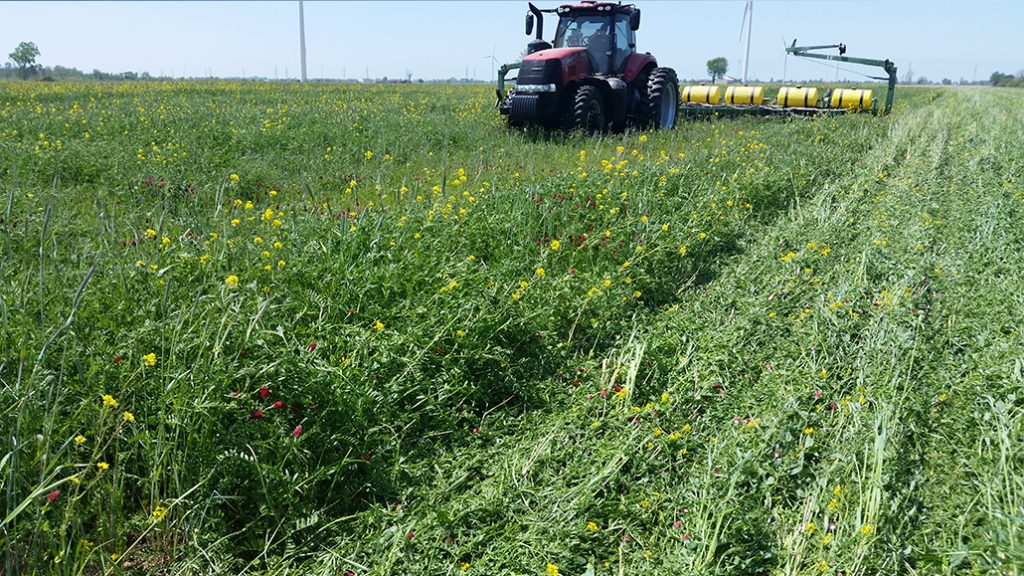
As early as 3,000 years ago, cover crops were employed in ancient China during the Zhou dynasty and in other east Asian civilizations in order to promote and maintain soil fertility (Blanco, 2023). In Rome, legumes were used as a common cover crop for the same reason. However, during the fourth century, Roman farmers began to move away from the cover crops they traditionally used, and because of this began to see significantly decreased yields in wheat and barley crops among others (Lal, 2015). Cover crops were also employed in America, mainly by the Iroquois tribe who practiced a farming technique called the Three Sisters Garden. This type of farming would entail planting beans, corn, and squash all in the same field so that each crop could benefit the others in some way. Corn acts as a trellis for the beans to climb, the beans add nitrogen to the soil for the corn to use, and the squash plant’s large leaves shade the ground, helping to suppress weeds and retain moisture in the soil (“MorningChores”, 2015). The beans and squash act as a kind of mixed cover crop in this system, where each serves some specific function of cover crops, which helped the Iroquois to grow far more and far healthier crops and use less farmland by planting things together. Some of our founding fathers, including George Washington, were advocates for cover cropping as well. Washington specified in his crop rotation list that he had some crops to “eat and sell” and others, such as clover and buckwheat, to “replenish the soil” which he planted while his cash crops weren’t using the field (Groff, 2015). Despite all of this history, however, just like the Romans during the 4th century, modern farmers have forgotten the incredible benefits of cover cropping and ravage today’s farmland with industrial farming practices. The widespread takeover of industrial farming practices began in the 19th century during the industrial revolution, when almost every process was being mechanized in order to require less time and labor. New technologies that made farming easier on a massive scale entered the industry, including chemical fertilizers and pesticides (Villanueva, 2023). This led to the farming industry dropping the majority of more traditional soil management strategies, including cover cropping, since fertilizers allowed much higher yields with less labor required.
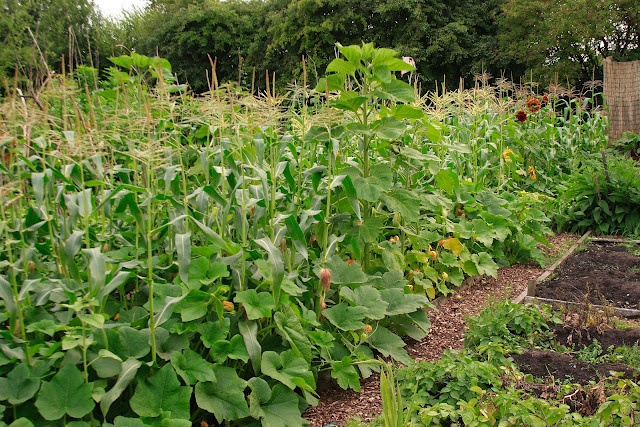

The industrialization of agriculture provided many incredible benefits to the world in the short term since it allowed labor to spread out across many different industries instead of just agriculture. This contributed to the furthering of our planet and our technologies in many ways, however industrial agriculture has been highly detrimental to our land in the long run. Technologies like chemical fertilizers may boost plant growth for one season, however they reduce future nutrient absorption capabilities within a field, meaning more and more fertilizer must be used in subsequent seasons (Yuan & Chen, 2015). This has caused significant degradation of our arable land, with one-third being destroyed in only the past four decades (Dockrill, 2015). Because of this, the world must begin to change its ways when it comes to agricultural practices, otherwise the planet will suffer, and we will suffer as a result.
What are the Benefits?
Many studies have been done in recent times which have shown a wide array of positive effects on soil health that cover cropping can have if implemented. These effects include an increase in soil microbiome health, higher water retention, decreased soil erosion, better weed suppression, and increased nutrient cycling (Yousefi et al., 2024). Cover cropping can also be used to help fight the climate crisis, since it increases carbon sequestration within the soil (Crystal-Ornelas et al., 2021). These positive benefits are passed on to the plants grown within a field, creating larger and healthier plants that are much better equipped to withstand negative environmental effects. Cover cropping can also have many positive economic benefits due to the increased yields it provides, easily canceling out any extra seed costs (“Under Cover”, 2012).
Microbiome Health
One of the most important properties of soil health is the health of the microbiome that lives within it. The microbiome controls all biotic processes within the soil, such as turning nutrients into energy for plants, increasing the water infiltration of soil, and storing carbon (Hermans et al., 2023). Soil microbiome health is being severely weakened by industrial farming practices which can disrupt the habitats of essential soil microbes and kill off microbes through the use of chemicals, turning healthy soil into comatose dirt in a matter of years. Cover cropping has been shown to reinvigorate the soil microbiome, increasing microbial biomass by around 28% and improving the effectiveness of soil enzymes by anywhere from 14% to 39% (Ma et al., 2021).
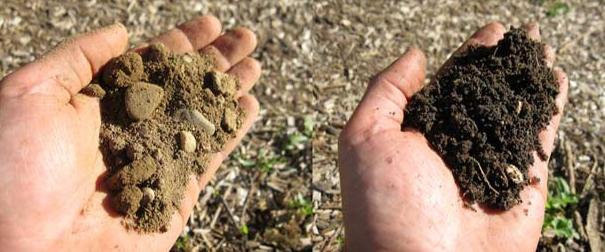
Water Retention
Along with increased water infiltration, cover cropping can also help to increase water retention within the soil (Yousefi et al., 2024). Cover crops increase the shade provided to soil, leading to reduced water loss to evaporation. They also decrease soil erosion, a benefit which will be discussed later, which helps hold soil together to store more water within. It is widely agreed that cover crops have very positive effects in regions with plenty of water, however many have disputed its effectiveness in arid and semi-arid regions. In these regions where soil moisture is incredibly valuable and must be used carefully, some studies have shown that cover crops use more water to grow than no-till fields, another sustainable farming practice, lose to evaporation (Nielsen et al., 2015). This would mean that cover cropping could be a detriment to fields in arid and semi-arid regions, however these studies fail to take into account the other positive effects that cover crops have on water retention post-growth and even post-death. Once the growing season begins for a field’s primary crop, cover crops are generally harvested and used as green manure in order to make room for the primary crop to be grown. When this is done, the fallen cover crop forms a sort of mat over the entire field, greatly reducing water loss due to evaporation during the primary crop’s growth (“Under Cover”, 2012). Also, the many positive effects of cover cropping beyond water retention have been shown to balance out or outweigh the water demand of cover crops, causing no detriment to crop yields in fields in arid regions while still providing a wide array of other soil health benefits (Blanco-Canqui et al., 2021). So, while the increased water demand of cover crops may decrease soil moisture during the growth of the cover crops, this can be outweighed by the increased water retention by cover crops after they are cut down and the other positive benefits on soil health.
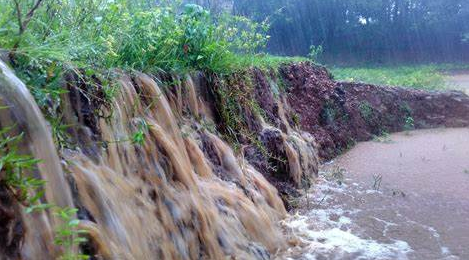
Soil Erosion
As I mentioned previously, soil retention is another property improved by cover cropping. Soil erosion caused by wind or water disrupts the soil microbiome and can cause excess sedimentation in waterways, negatively affecting ecosystems and potentially causing fooding. Soil erosion is drastically reduced when cover crops are employed since when a field is bare, there are no root structures in place to keep soil in place, making it more susceptible to being carried away by wind or rain (Yousefi et al., 2024). When cover crops are planted, their root structures help to hold the soil in place and their leaves help to shield the ground from wind. Cover crops will also use water to grow, helping to prevent oversaturation of the soil and reducing runoff in very wet regions, helping to prevent nearby stream and river ecosystems from any harmful chemicals potentially present in fields.
Nutrient Cycling
Nutrient cycling is the process of plants absorbing nutrients from the environment and subsequently returning the nutrients to the environment, a process which repeats over and over and is necessary for the health of plants and animals alike. This process is significantly improved by cover cropping since cover crops absorb nutrients and are then generally harvested and left in place, allowing nutrients to return to the soil through decomposition or to animals if the cover crops are used as feed for livestock. The main nutrient which is cycled is nitrogen, but the cycling of other nutrients such as potassium and phosphorus are also improved (Koudahe et al., 2022). All of these nutrients are found in chemical fertilizers, meaning that if their cycling is improved through natural means such as cover crops, fertilizers won’t be needed in order to increase the nutrients within the soil.
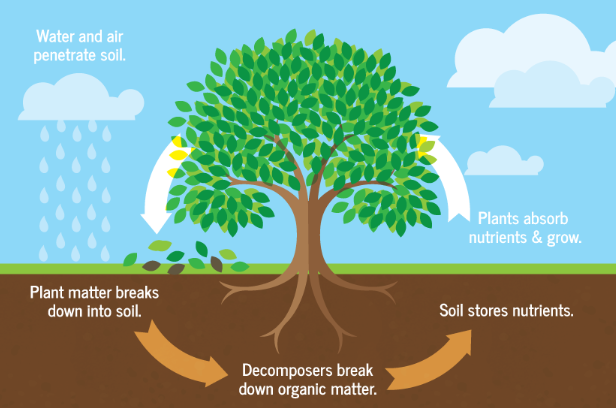
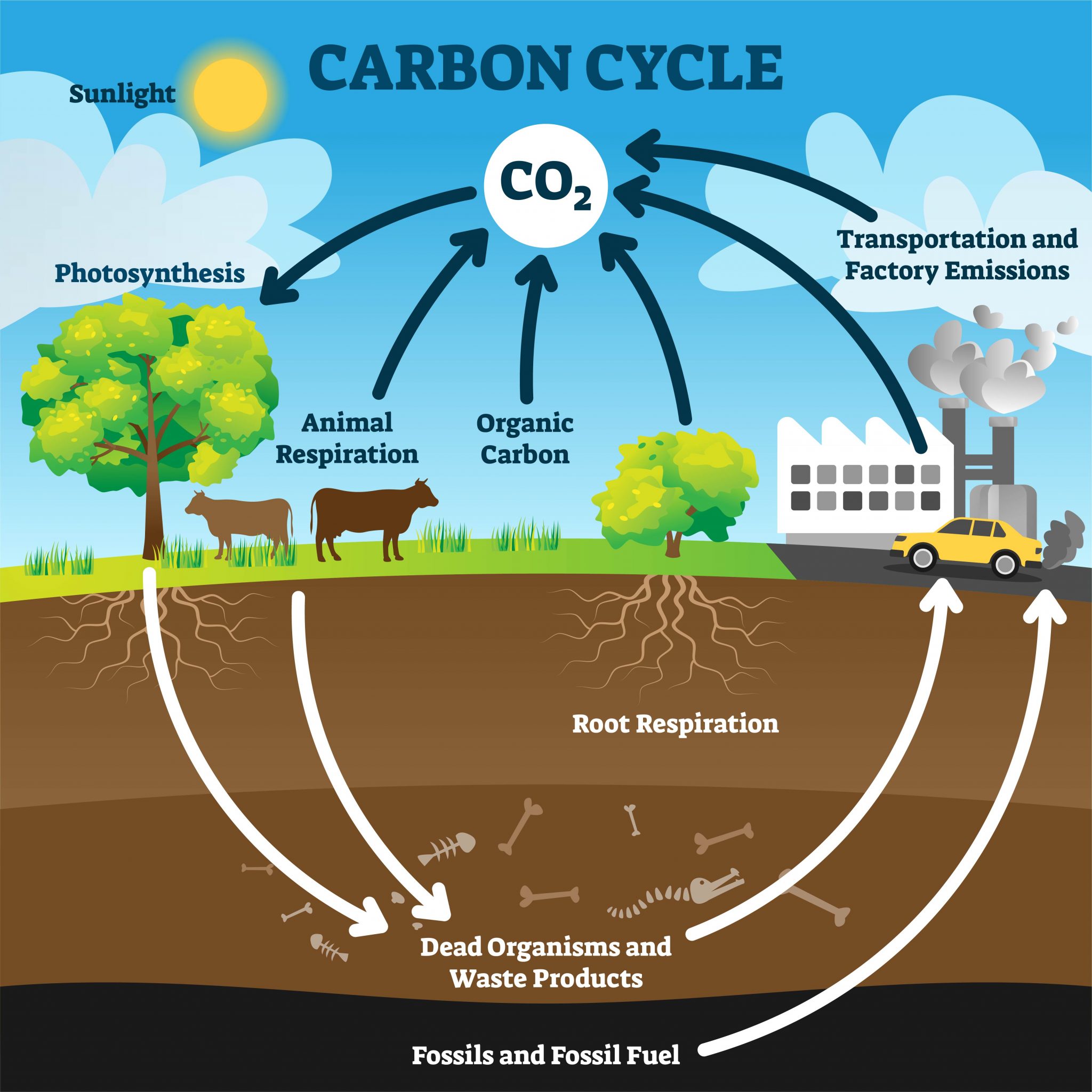
Carbon Sequestration
Another incredibly important nutrient which wasn’t discussed previously is carbon. The cycling and sequestration of carbon isn’t only important because plants require it in order to grow, but also because carbon dioxide is a primary greenhouse gas contributing to the climate crisis. Studies have shown that the use of cover crops can improve carbon sequestration greatly, helping to remove carbon dioxide from the atmosphere where it is harmful and move it into the soil where it can help improve the health of crops. Carbon sequestration is measured using two different metrics, soil organic carbon (SOC) and microbial biomass carbon (MBC) (Crystal-Ornelas et al., 2021). The SOC level within soil is the amount of carbon stored within decomposing plant or animal matter, which contributes to increased nutrient cycling through decomposition (Edwards, 2022). The MBC level measures how much carbon is found within the bacteria and fungi which comprise the soil microbiome (Carson, 2024). As previously explained, soil microbiome is one of the most important properties of soil health, so creating a healthier microbiome will help to improve the health of the entire ecosystem within a field. Both SOC and MBC levels were shown to increase due to cover cropping; SOC levels by as much as 14% and MBC levels by as much as 30% (Crystal-Ornelas et al., 2021).
Weed Suppression
Another property which is improved by cover cropping is weed and pest suppression. By introducing cover crops into a field, especially crops with large, early emerging leaves, weed growth is significantly reduced in fields (Brennan & Smith, 2005). This is helpful because weeds take valuable nutrients from the soil for their own use instead of those nutrients benefitting the primary crop that’s being grown. Depending on the type of cover crop you plant, levels of weed suppression may vary. Among different common types of cover crops, one study showed that weeds tended to emerge earliest in fields where a legume/oat mix of cover crops was used, and emerged the least in fields where mustard was used due to its fast sprouting and large leaves (Brennan & Smith, 2005). Some cover crops can also help to suppress some pests, since introducing cover crops and then cutting them down when the primary crop is to be planted can disrupt the habitat of harmful insects and actually attract helpful ones instead.
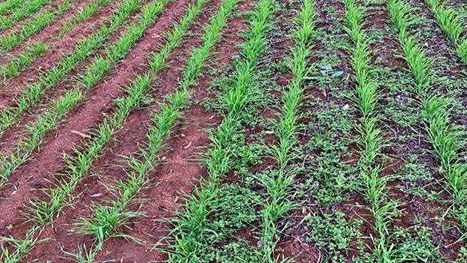
Economic Benefits
Finally, cover cropping can provide significant economic benefits for farmers who employ them. Many farmers who have recently moved toward more regenerative farming practices including cover cropping are seeing higher yields of healthier crops compared to similar farmers who use conventional industrial farming practices. While some farmers have been reluctant to adopt the practice due to extra seed costs and possible extra equipment costs, cover cropping has proven to pay these costs back plus more (“Under Cover”, 2012). Not only does cover cropping improve crop yields, which obviously creates more profit, but the positive effects that cover cropping has on soil health reduces the need for chemical inputs, saving money for farmers on that front. Extra equipment isn’t much of an issue either, since planting cover crops doesn’t take any equipment that farmers don’t already have for planting and harvesting their primary crop. So, while cover cropping may have a higher upfront cost than industrial farming, in the long run it will save a lot of money and any extra costs will be made back easily.
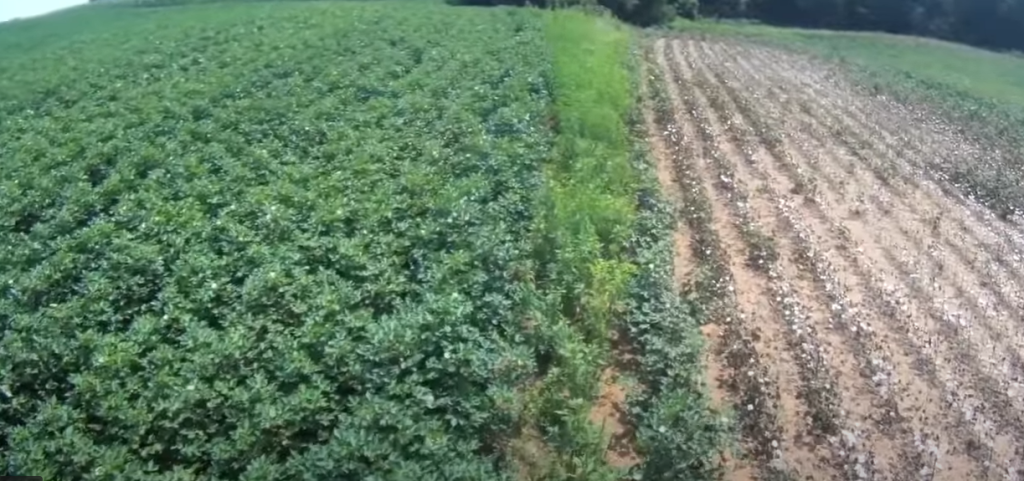
Current Use
Cover cropping may currently be in its infancy as a practice, but it is being employed more and more by farmers and communities who desire a more sustainable way of farming or who are trying to revitalize comatose fields. In one example, researchers went to west Africa where large amounts of land were degraded to the point of uselessness, and they helped to implement and encourage the adoption of cover cropping practices (Buckles et al., 1998). When the technology was first introduced to them, most farmers were hesitant to implement cover crops due to the fact that they would compete for valuable resources with their primary crop. However, some did implement cover crops, and many farmers who didn’t originally adopt it did end up adopting the practice after seeing the positive effects that it could have. The researchers also attempted to find the most effective cover crop to plant in the area and settled on a native legume species that was already consumed commonly, so that the cover crop would not only be used to revitalize soil but could also function as a minor food source for farmers growing it. In the long term, this helped to reinvigorate communities who were previously left destitute due to the degraded state of their farmland.
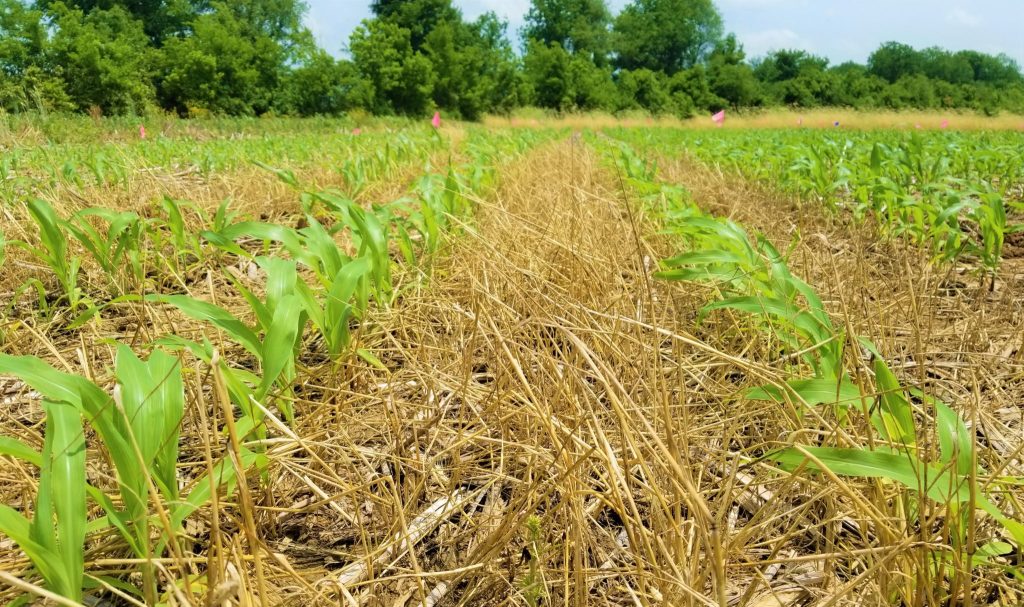
There are also some farmers in America who are moving toward cover cropping. Farmers in Stanley County, NC who have adopted cover cropping have reported 98% weed suppression in their fields, greatly increased water retention keeping soil moist even weeks after the last rain, and reducing their fertilizer usage and herbicide usage by as much as 75% (“Under Cover”, 2012). They have also reported that the benefits haven’t hit a plateau yet, so yields are expected to continue to climb in the future while fertilizer usage falls steadily until it is no longer required at all.
How can it be Improved?
As with many sustainable and regenerative farming practices, cover cropping is still in its infancy. The positive benefits are clear, however the ways to maximize those positive benefits are still somewhat unknown to us. Research is constantly being conducted in order to find the best mixes of cover crops, the best time to plant and harvest cover crops, and the effects of cover cropping on different soil types. Currently, researchers have come to a conclusion that legumes are the best cover crop for the promotion of nutrient cycling (Ma et al., 2021), however as previously discussed legumes don’t suppress weeds nearly as much as other cover crops. Mustard, which does suppress weeds very well, doesn’t cycle nutrients nearly as effectively. One study showed that flowering cover crops can be incredibly beneficial due to the increased pollinator traffic that they provide. Growing a mix of a few native flowers has proven to greatly increase pollinator abundance, as well as taxonomic and functional diversity. A variety of pollinators, including rare and oligolectic bee species were observed within fields of flowering cover crops, contributing to higher biodiversity in the ecosystems around the fields as well as healthier and faster pollination of crops (Triquet et al., 2024). Flowering cover crops, however, do not provide some of the benefits that other cover crops like legumes can provide. Because of this, cover crop mixes are being researched to figure out the best combinations to plant so that as many benefits can be provided as possible. Some mixture of legumes, fast sprouting leafy plants, and flowering plants may be optimal to provide the widest array of benefits. This diverse selection of cover crops somewhat mimics the natural tendencies of wild fields which are full of many different flowers, grasses, and shrubs, so looking to nature as our guide for cover crop mixtures may be the next step in determining the best ways to plant and harvest cover crops.
What Can You Do?
Cover cropping is a practice which has an incredibly vast array of positive benefits for soil and ecosystem health. In a world where only two-thirds of our arable land remains, sustainable and regenerative farming practices such as cover cropping must be adopted in order to maintain our ability to feed an ever-increasing population and maintain the health of the planet which we inhabit. While there are questions about the effectiveness of cover cropping in arid regions, the positives of cover cropping are able to balance out or even outweigh any negatives that may be present.

We aren’t all farmers, though, so what can everyday people do to rejuvenate their soil with cover crops? Anyone who keeps a garden, or flowerbeds, or even a yard can implement cover crops in order to create healthier soil. In a garden, you can plant things like grasses or clover to revitalize the soil in between growing your main crops. In a flower bed, instead of leaving it bare, you can plant ground cover such as ivy, wildflowers, or grasses in between your shrubs and flowers to improve the properties of the soil. Even in your yard, having a variety of plants besides grass such as clover and dandelions, which may grow in your yard naturally, can help make your yard healthier by cycling a variety of nutrients. These strategies will help your yard and garden to be healthier and produce healthier foods, as well as sequester more carbon from the atmosphere. This may not be noticeable in the small frame of your own yard, but if everyone decided to implement these strategies into their yards more significant effects could be observed. Overall, cover cropping is one of if not the most effective soil management practice that we can adopt.
Bibliography
Blanco, H. (2023). Cover crops and soil ecosystem services. American Society of Agronomy.
Blanco‐Canqui, H., Ruis, S. J., Holman, J. D., Creech, C. F., & Obour, A. K. (2021). Can cover crops improve soil ecosystem services in water‐limited environments? A Review. Soil Science Society of America Journal, 86(1), 1–18. https://doi.org/10.1002/saj2.20335
Brennan, B. & Smith, R. (2005). Winter Cover Crop Growth and Weed Suppression on the Central Coast of California. Weed Technology, 19(4), 1017-1024. https://doi.org/10.1614/WT-04-246R1.1
Buckles D., Etèka A., Osiname O., & Galiba M. (1998). Cover crops in West Africa: contributing the sustainable agriculture. International Development Research Centre.
Carson, J. (2024). Microbial Biomass Carbon – New South Wales. Microbial Biomass Carbon – NSW | Fact Sheets. https://www.soilquality.org.au/factsheets/microbial-biomass-carbon-nsw
Crystal-Ornelas, R., Thapa, R. & Tully, K. (2021). Soil organic carbon is affected by organic amendments, conservation tillage, and cover cropping in organic farming systems: A meta-analysis. Agriculture, Ecosystems, and Environment, 312, 167-174. https://doi.org/10.1016/j.agee.2021.107356
Dockrill, P. (2015, December 3). The world has lost a third of its farmable land in the last 40 years. ScienceAlert. https://www.sciencealert.com/the-world-has-lost-a-third-of-its-farmable-land-in-the-last-40-years
Edwards, T. (2022, June 28). What is Soil Organic Carbon?. Agriculture and Food. https://www.agric.wa.gov.au/measuring-and-assessing-soils/what-soil-organic-carbon
Groff, S. (2015). The past, present, and future of the cover crop industry. Journal of Soil and Water Conservation, 70(6) 130-133. https://doi.org/10.2489/jswc.70.6.130A.
Hermans, S. M., Lear, G., Case, B. S., & Buckley, H. L. (2023). The soil microbiome: An essential, but neglected, component of regenerative agroecosystems. iScience, 26(2), 106028. https://doi.org/10.1016/j.isci.2023.106028
Karasawa, T. (2024). Beneficial effects of cover crops on various soil functions and nutrient supply. Soil Science & Plant Nutrition, 70(4), 237–245. https://doi.org/10.1080/00380768.2024.2360022
Koudahe, K., Allen, S., & Djaman, K. (2022, April 5). Critical Review of the impact of cover crops on soil properties. International Soil and Water Conservation Research. https://www.sciencedirect.com/science/article/pii/S2095633922000259#abs0010
Lal, R. (2015). Soil carbon sequestration and aggregation by cover cropping. Journal of Soil and Water Conservation, 70(6), 329-339. https://doi.org/10.2489/jswc.70.6.329.
Ma, D., Yin, L., Ju, W., Li, X., Liu, X., Deng, X., & Wang, S. (2021). Meta-analysis of green manure effects on soil properties and crop yield in northern China. Field Crops Research, 266, 108146. https://doi.org/10.1016/j.fcr.2021.108146
MorningChores Staff. (2019). How to start a three-sisters garden: An ancient and proven method. Morning Chores. https://morningchores.com/three-sisters-planting/
National Garden Bureau. (N.D.), Putting Your Garden to Bed: How to Rebuild Healthy Soil for Next Year’s Garden with Cover Crops. National Garden Bureau. https://ngb.org/cover-crops/
Nielsen, D. C., Lyon, D. J., Hergert, G. W., Higgins, R. K. Calderon, F. J., & Vigil, M. F. (2015). Cover crop mixtures do not use water differently than single-species plantings. Agronomy Journal, 107, 1025 1038. https://doi.org/10.2134/agronj14.0504
Times Agriculture. (2024). The Power of Cover Crops: Benefits and Best Practices. timesagriculture. https://timesagriculture.com/the-power-of-cover-crops-benefits-and-best-practices/
Triquet, C., Wezel, A., Tolon, V., & Ferrer, A. (2024). Undestroyed winter cover crop strips support wild bee abundance and diversity in intensive cropping systems. Biodiversity & Conservation, 33(1), 179–204. https://doi.org/10.1007/s10531-023-02741-5
USDA NRCS East National Technology Support Center. (2012). Under Cover Farmers – Feature Length [Video]. Youtube. https://www.youtube.com/watch?v=nWXCLVCJWTU&t=2s
Villanueva, E. (2023, October 18). When did industrial agriculture begin – agriculture lore. Grow with us! Cultivating a better future. https://www.agriculturelore.com/when-did-industrial-agriculture-begin/
Yousefi, M., Dray, A., & Ghazoul, J. (2024). Assessing the effectiveness of cover crops on ecosystem services: a review of the benefits, challenges, and trade-offs. International Journal of Agricultural Sustainability, 22(1), 1–15. https://doi.org/10.1080/14735903.2024.2335106
Yuan, Z. Y., & Chen, H. Y. H. (2015). Negative effects of fertilization on plant nutrient resorption. Ecology, 96(2), 373–380. http://www.jstor.org/stable/43495078